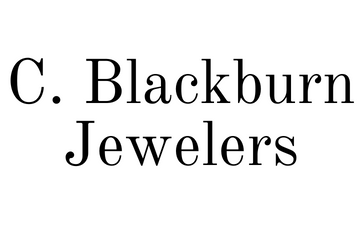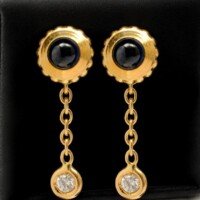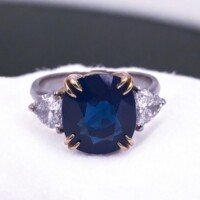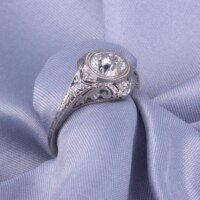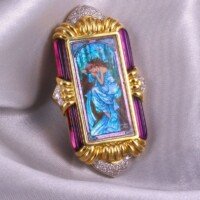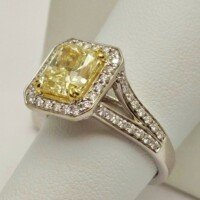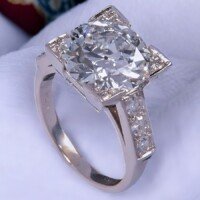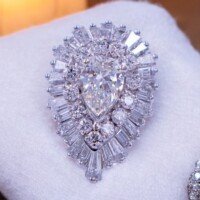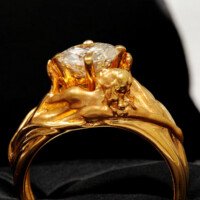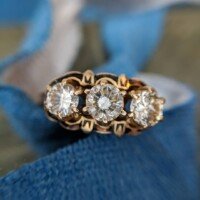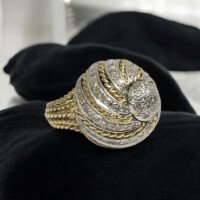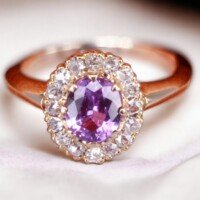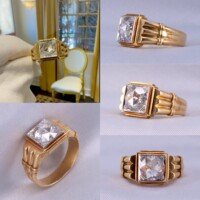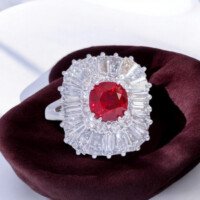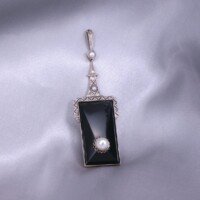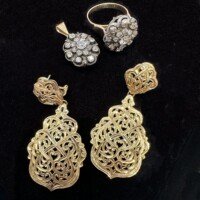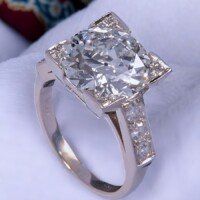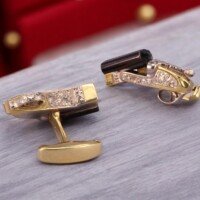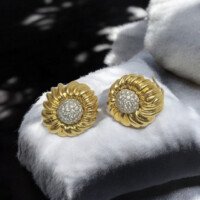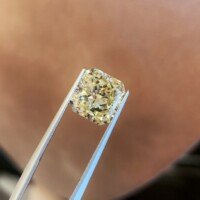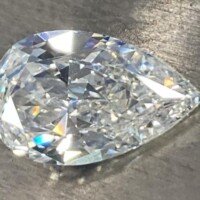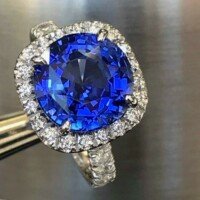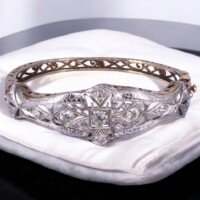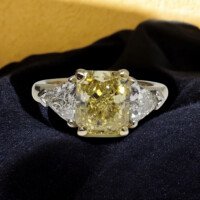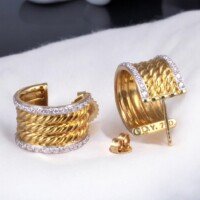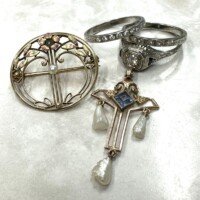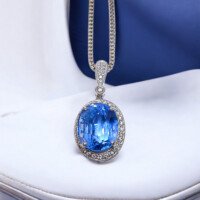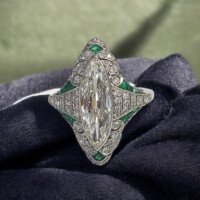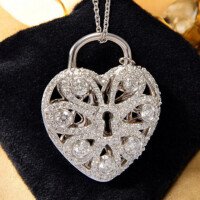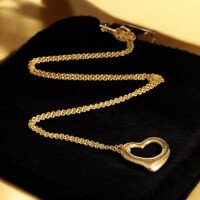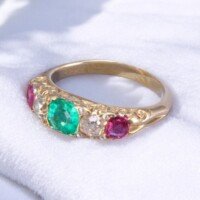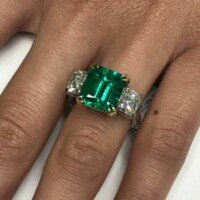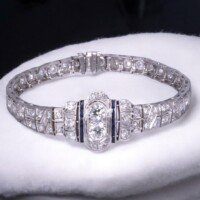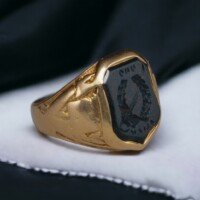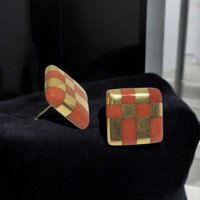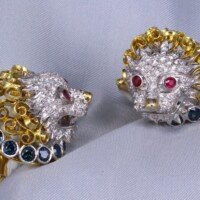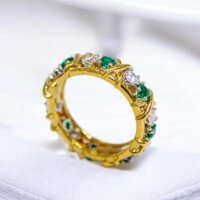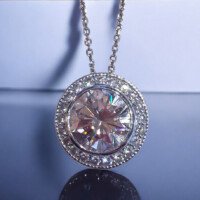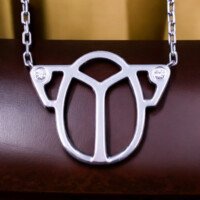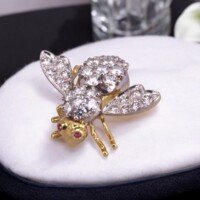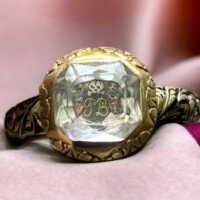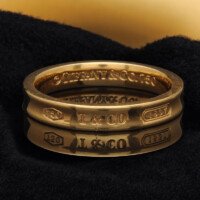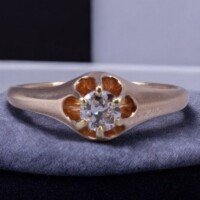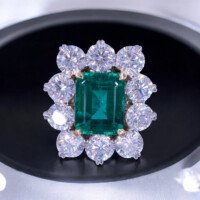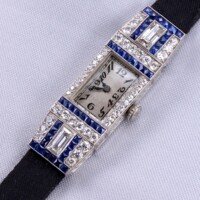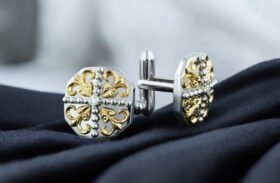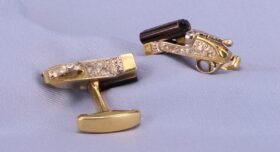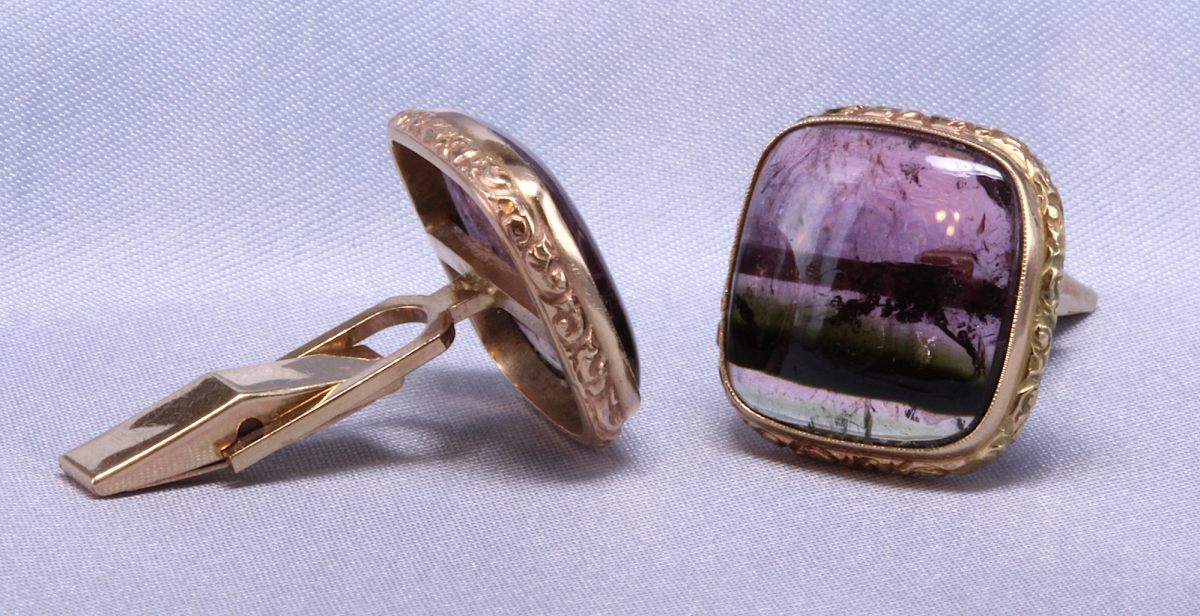
03 Mar Sell or Buy Antique Victorian Cufflinks
Seen Above: Recently Bought Victorian Men’s Cuff-links, Featuring a Matching Pair of Bi-color Tourmalines
As antique jewelry buyers, C. Blackburn Jewelers (La Jolla) regularly buys and sells all types of antique jewelry, including men’s cufflinks. Recently we purchased and resold a beautiful pair of 14K Victorian era men’s cufflinks, set with rare bi-color tourmalines: a type of tourmaline gemstone that features two distinct colors within the same stone. This got us thinking about the history of cufflinks, whose origins trace back to ancient times and follow their evolution through various eras of fashion, including the Victorian period, up to today.
The Victorian era, which lasted from 1837 to 1901, was a time of great change and innovation in fashion. During this time, cufflinks became an important accessory for men’s formal attire, with a wide variety of styles and designs being produced.
One of the most popular types of cufflinks during the Victorian era were double-faced cufflinks. These cufflinks had a design on both sides, allowing the wearer to display a different design depending on their mood or the occasion. Double-faced cufflinks were often made of precious materials like gold and silver, and were adorned with intricate designs and gemstones.
Another popular style of cufflinks during the Victorian era were chain cufflinks. These cufflinks consisted of a pair of decorative studs connected by a chain. Chain cufflinks were often made of gold or silver and featured elaborate designs and motifs like monograms or family crests.
Cufflinks during the Victorian era were also influenced by the Arts and Crafts movement, which emphasized traditional craftsmanship and simple, elegant designs. Cufflinks from this era often featured natural motifs like flowers, leaves, and animals, and were made of materials like enamel and mother-of-pearl.
In addition to their decorative function, cufflinks during the Victorian era also served a practical purpose. Men’s shirts at the time often had stiff cuffs that were difficult to fasten, and cufflinks provided a secure and stylish way to keep the cuffs in place. Read our post on the most famous cufflinks maker of the Victorian period: Deakin & Francis.
If you have vintage or antique cufflinks, fashioned in 14K or 18K gold, and set with precious or semi-precious gemstones, contact C. Blackburn Jewelers today. Owner Carl Blackburn will gladly provide you with a free cash appraisal of your cufflinks and share with you any information he knows about your item. Let us show you why we are the best San Diego jewelry buyer for antique jewelry.
Call 858-251-3006 or tell us about your cufflinks via our contact form below.
Text Message & Photos:
619-723-8589
Recent Estate Jewelry Buys
Browse a collection of C. Blackburn Jewelers’ recent purchases of rings, cufflinks, earrings, and more.
Easy to Work With
Carl is a great jeweler and easy to work with. He handles a wide variety of services from buying jewelry to designing custom pieces for you. I sold some old jewelry to him, he had very fair prices transactions were handled in a timely manner
Careful Inspection
I recently sold a lot of fine jewelry that I had inherited from my mother. I chose C. Blackburn because I wanted the pieces to find new homes, rather than be melted down or taken apart. Carl careful inspected and considered each piece before pricing it. He explained the quality of the gold in each piece, the techniques used to craft the pieces, and what went into his pricing. He appreciated the sentimental value of the items and actually had buyers in mind for several of them. I felt that he gave me a fair price the first time I came in, so I returned with additional items to sell a few weeks later. I’d highly recommend C. Blackburn for selling and buying estate jewelry.
A Straight Shooter
I met with most of the Jewelers around La Jolla and no one was as knowledgeable or as helpful as Carl was to me. Carl Blackburn is a straight shooter and someone you can trust. C. Blackburn Jewelers will forever have my business and recommendation to all of my network for any future jewelry business.
Genuine & Friendly
Being at a downsizing stage of life, I decided to sell as much of my jewelry as possible, and luckily, I came across C. Blackburn Jewelers. I was scared of getting scammed and cheated. Carl had me sitting with him while he examined and evaluated my jewelry. He did not take it into a back room and tell me to return on another day.
He worked methodically and very professionally, answered all my questions, kept my expectations realistic, explained what he was doing as he worked. We also had a very pleasant conversation – he is down-to-earth, genuine, and friendly. I trusted him without hesitation. I was very pleasantly surprised by the outcome and felt I was very fairly treated. I was relieved that the process was stress-free, thanks to Carl’s very professional manner and his genuine friendliness. I recommend him highly, without reservation.
Popular Styles of Victorian Era Cufflinks
Fabergé Cufflinks: Peter Carl Fabergé was a famous Russian jeweler who created a number of beautiful cufflinks during the late 19th century. His designs often featured intricate enamel work and precious stones.
Diamond and Pearl Cufflinks: Diamond and pearl cufflinks were a popular choice for Victorian gentlemen. These cufflinks were often made from gold or silver and featured small pearls surrounded by diamonds.
Agate Cufflinks: Agate was a popular stone during the Victorian era, and many beautiful cufflinks were made from this material. These cufflinks often featured carved designs or cameos in the center of the stone.
Animal Motif Cufflinks: Animal motifs were a popular choice for Victorian cufflinks, with designs featuring everything from dogs and horses to snakes and dragons. These cufflinks were often made from gold or silver and featured intricate detailing.
Intaglio Cufflinks: Intaglio cufflinks were another popular choice during the Victorian era. These cufflinks featured a carved design or image that was recessed into the surface of the stone. The design was often created using a technique called cameo carving, where the image was carved in relief and then polished to create a contrast between the raised and recessed areas.
